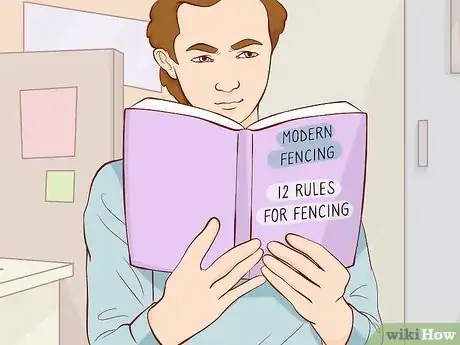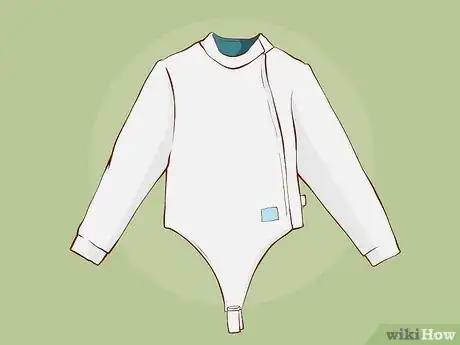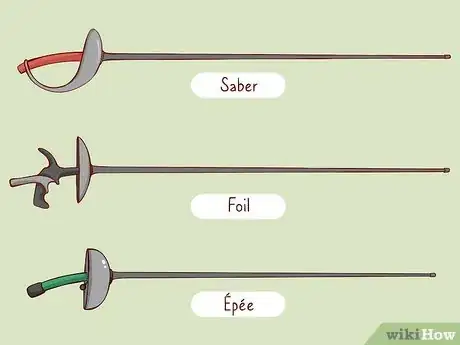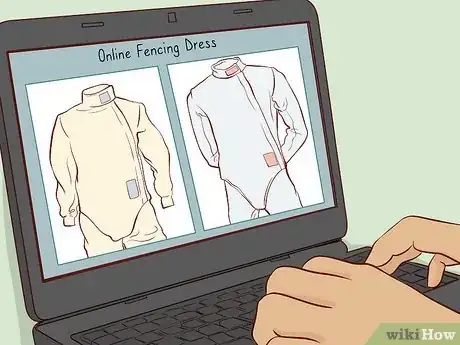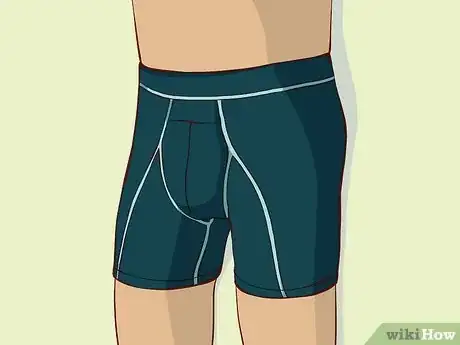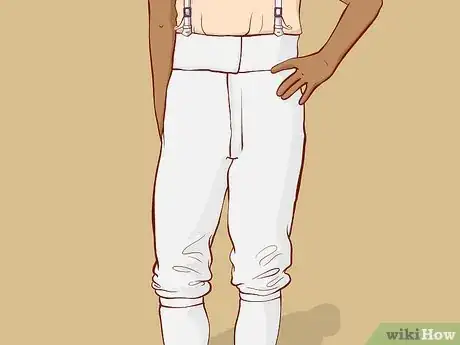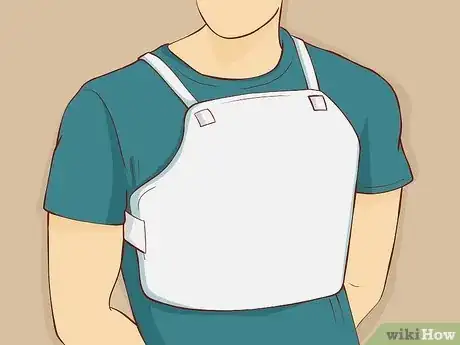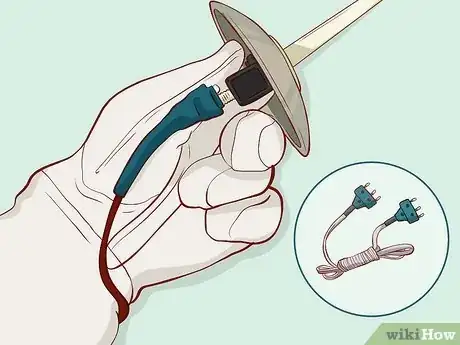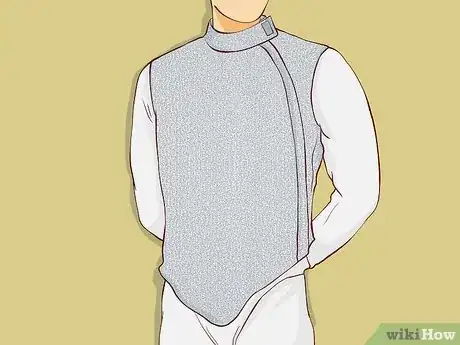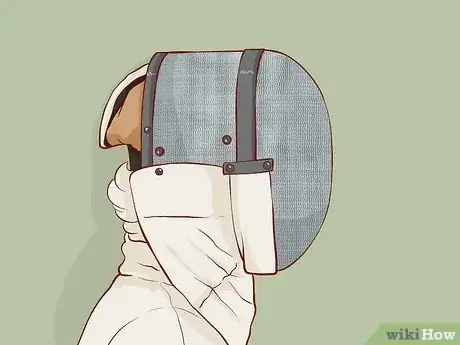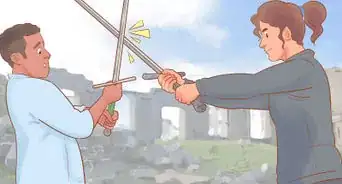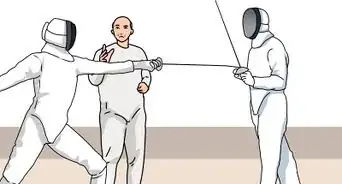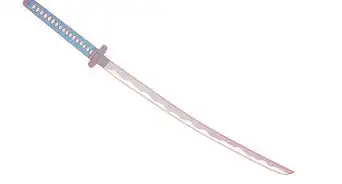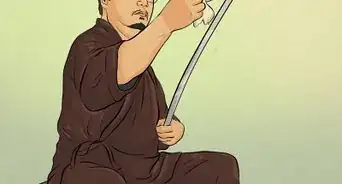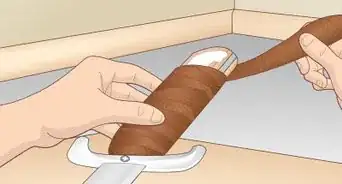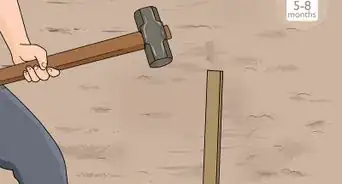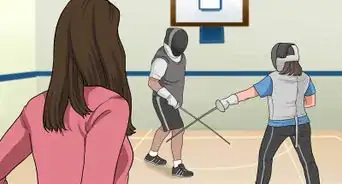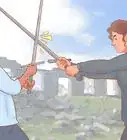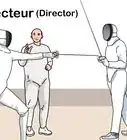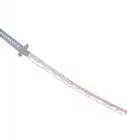X
wikiHow is a “wiki,” similar to Wikipedia, which means that many of our articles are co-written by multiple authors. To create this article, 19 people, some anonymous, worked to edit and improve it over time.
This article has been viewed 29,681 times.
Learn more...
Fencing is an Olympic sport, where the athletes fight with blades. There are three weapons in modern fencing: foil, épée, and sabre, and each of them has a slightly different set of rules. Due to these differences, the fencing equipment depends on the weapon. Because the safety play a crucial role in fencing, it is important to wear the proper equipment for protection.
Steps
Part 1
Part 1 of 2:
Choosing the Right Equipment
-
1Understand the fencing rules. Fencing is governed by Federation International d’Escrime (FIE). Thus, all equipment should meet the FIE’s standards. Make sure your equipment is legal and follows all of the guidelines.
-
2Dress for safety. The safety measures specified the fencing rules are designed to increase the fencers’ safety. In short, FIE rules state that the tournament outfits must be made of fabric that resists a certain amount of force. The preceding table shows the minimum safety standards for clothing.Advertisement
-
3Equip yourself according to the weapon that you fence.
- Foil is a light thrusting weapon. It has a small circular hand guard which protects the hand.
- Épée is a thrusting weapon (heavier than the foil). It has a large circular hand guard that serves to protect the hand from touches.
- Sabre is a light cutting and thrusting weapon. The Sabre hand guard is specific because it is turned outwards, and connects the pommel with the base. It also aims at protecting the arm from touches.
-
4Find the appropriate clothes. Most fencing clubs will tell you what uniform to buy. Be sure to buy equipment that is safe, comfortable, and functional and to shop only from professional stores. Remember that although the traditional fencing uniform is white, the FIE also allows other colors (except for black).
Advertisement
Part 2
Part 2 of 2:
Putting on Fencing Equipment
-
1Put on the sports underwear or warm-ups. The inner layer of clothes gives an additional comfort during bouts.
-
2Put on long socks. They cover and protect the knees from the strong touches.
-
3Put on trousers that end below the knee (called breeches or knickers). Usually, these are equipped with suspenders. Along with socks, it protects the legs from touches. The brace prevents the breeches from shifting around.
-
4Wear sport shoes with flat soles. They should be reinforced on the inside of the back foot and heel of the front foot in order to decrease the wear from lunging.
-
5Wear a plastic chest protector. It protects your chest from the painful touches.
-
6Put on a plastron (underarm protector). This is extremely important for your safety, as it protects the arm and its side doubly.
-
7Put on a jacket with a strap which goes between the legs. The folded fabric, sewn in around the collar, will protect your neck from fencing stabs.
-
8Don’t forget about the body cord. It must be attached to the weapon and scoring box to register the touches. It must run inside the weapon arm's sleeve, and then down the back. If you fence Sabre or foil, connect the body cord to the lamé to create a circuit to the scoring box.
-
9If you fence foil or Sabre, wear a lamé. Wear it over the jacket to cover the on-target area. It serves to distinguish valid hits from those that are invalid. In épée, the entire body is a target, so a lamé is unnecessary.
- Please note that the foil and saber lamés are different. A foil lamé is sleeveless, while a sabre lamé has sleeves and ends across the waist.
-
10Wear a mask with the bib and back strap. The bib protects the neck. The back strap holds the mask stable. Keep in mind that there are different masks for foil, épée, and saber.
- Wear one glove with a gauntlet for the weapon arm. It protects the hand and provides a good grip.
Advertisement
Warnings
- Consult a doctor if you have any health concerns before fencing.⧼thumbs_response⧽
- According to FIE rules, fencers arm, equip, clothe themselves, and fence at their own responsibility and at their own risk.⧼thumbs_response⧽
- If you choose not to follow the dress code for fencing, not only can you hurt yourself, but you may also be penalized or even disqualified.⧼thumbs_response⧽
Advertisement
Things You'll Need
- Foil/Sabre/Épée glove
- Foil/Sabre/Épée mask
- Foil/Sabre/Épée body cord
- Foil/Sabre mask cord
- Foil/Sabre lamé
- Jacket
- Breeches/Knickers
- Plastron
- Underarm protector
- Shoes
- Knee-length or thigh high socks
- T-shirt (optional)
- Short (optional)
- Hair bands (optional)
References
About This Article
Advertisement
